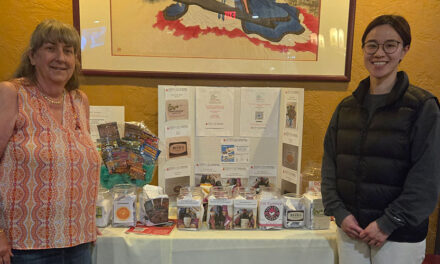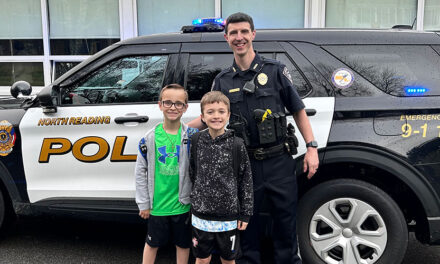Published in the October 26, 2017 edition
PORTLAND, Maine — Joseph M. Cappuccio of North Reading received his white coat in a ceremony marking his symbolic entrance into the medical field in a ceremony at the Merrill Auditorium in Portland, Maine September 23.
It was the 21st White Coat Ceremony at the University of New England College of Osteopathic Medicine (UNE COM), the largest provider of physicians for the state of Maine.
“This ceremony serves to welcome these students into the medical profession and to honor their commitment to serving the needs of their future patients,” said Jane Carriero, D.O., vice president for Health Affairs and dean of UNE COM. “As they wear their white coats for the first time, they join generations of physicians around the country committed to service through medicine.”
The White Coat Ceremony was an idea conceived by the Arnold P. Gold Foundation to create a psychological contract for professionalism and empathy in medicine. The first White Coat Ceremony took place in 1993 at Columbia College of Physicians and Surgeons. Since then, 97 percent of medical schools in the U.S. and abroad have initiated a similar ceremony.
At the UNE COM ceremony, students were welcomed by Dr. Carreiro and President of UNE James Herbert, Ph.D. Physicians presented white coats to the first year students as a symbolic mantle of the medical profession, underscoring their bonds as future professional colleagues. The keynote speaker was Craig S. Boisvert, D.O., a member of the first graduating class of 1982. When the doors of Maine’s Osteopathic Medical School opened for the very first time in 1978, Dr. Boisvert was one of the 36 medical students enrolled. He is the current dean of the West Virginia School of Osteopathic Medicine.
For Cappuccio, who is the son of Laurie and the late Ralph Cappuccio and the older brother of Carley and Olivia Cappuccio, entering the medical profession marks a personal milestone and commitment he made after losing his dad and mentor to non-Hodgkins lymphoma on April 23, 2008, when he was a freshman at Malden Catholic High School.
His family often refers to his mission as “stopping the rain” because the sun had notably shined brightly every day during the last month they had shared with his dad, until the night he passed and the skies opened up. By learning to “stop the rain,” he hoped that other kids would not have to experience the loss that he and his sisters had at such a young age.
As a high school student, he organized an annual cancer awareness month with the help and support of faculty and fellow students. He also became actively involved with his family and numerous local supporters in the North Reading Relay for Life to support the American Cancer Society, including giving a keynote address at the town’s 2010 Relay, which was dedicated to his father.
As an undergraduate at Boston University in 2014, he was invited to recount his family’s experience by delivering the keynote address before a crowd of several thousand at BU’s Relay for Life, which was ranked sixth in the nation in fundraising dollars among all colleges and universities. The publicity chair of BU’s Relay at the time was Cristina Gallotto, a friend and classmate of Cappuccio’s from North Reading.
In 2015, Cappuccio finished the first leg of this journey when he graduated from the Sargent School at Boston University with a bachelor’s degree in human physiology.
Subsequently, when applying to medical school, Cappuccio recalled the compassionate tone and genuineness of his father’s oncologist, Dr. LaCasce, when she broke the news to them that his dad’s treatments were not working. “She counseled my family during our time of need, demonstrating a deep investment in her patient,” he wrote.
Eight years later, Cappuccio was working as a clinical research coordinator for the multiple myeloma group at Dana Farber Cancer Institute where through his daily interactions with patients and physicians he learned the importance of these relationships, becoming invested in patient’s lives and being a part of a treatment team that puts the patient’s interests first, especially when options are few.
“As I help a patient into his seat, I envision my dad being helped into the same chair at the same facility. The place I once associated with loss and destruction now serves as the center of my professional life. Over the course of the past year, I have come to the realization that medicine serves a much greater purpose than simply finding a cure,” he wrote.
He continued, “I have come to accept that not every disease can be cured. Medicine serves to cure when possible, but often times, the ultimate goal of medicine is to heal, whether it be emotionally, physically or socially. I began to view medicine not just as a means to an end, but rather as a unique and elegant pairing of scientific discovery and human compassion. This serves as a distinguishing characteristic of a profession I hope to one day join.”





